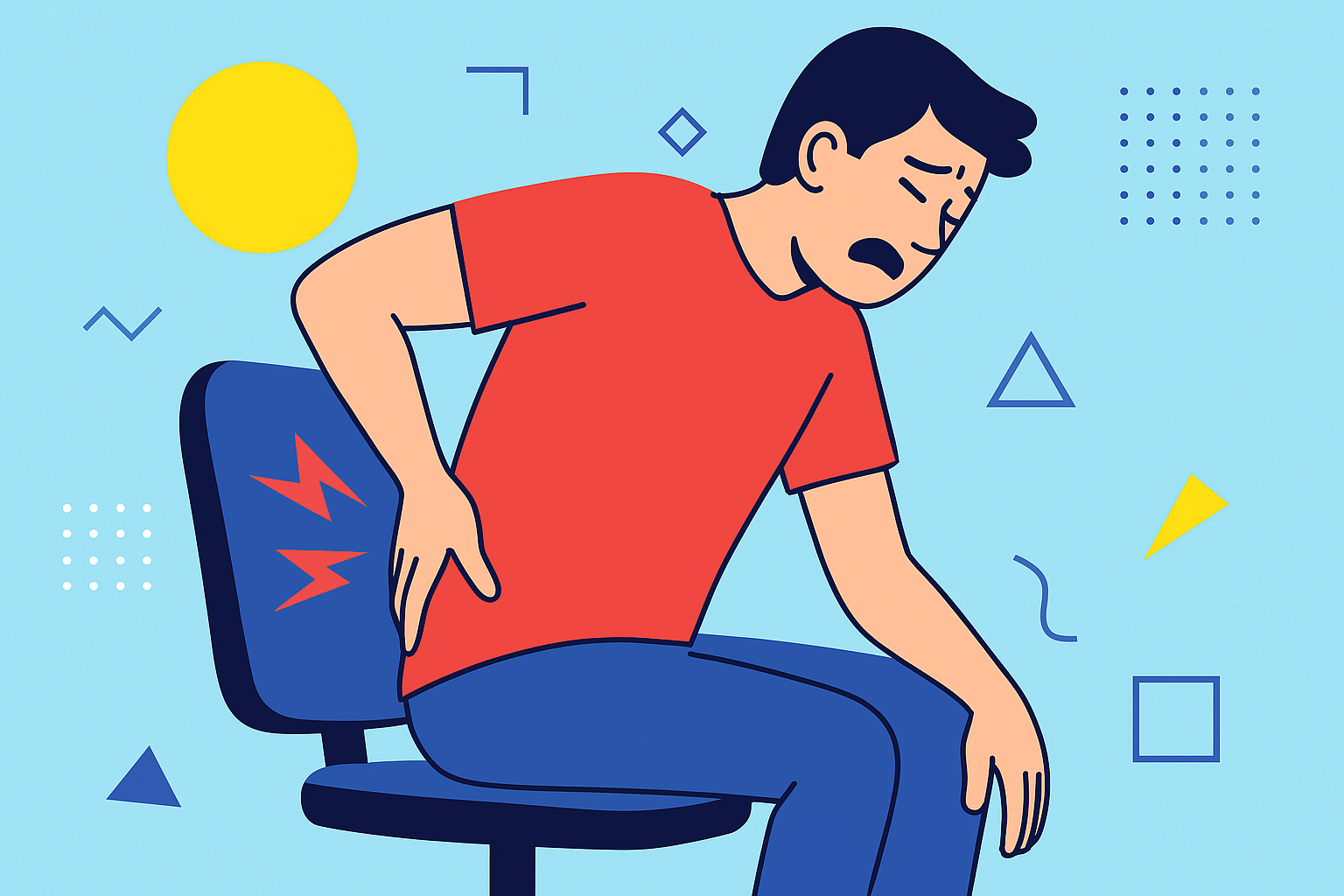Let’s be real: we all slouch. Whether it’s hunching over a laptop, craning our necks toward a smartphone, or melting into a couch cushion, bad posture has become the default for the modern body. But here’s the kicker—slouching doesn’t just make us look like we’re auditioning for a role as Quasimodo. It impacts our energy levels, confidence, breathing, and even digestion.
Slouching is the act of rounding your shoulders forward, letting your head drop slightly, and collapsing your upper spine—usually while sitting or standing. It’s that all-too-familiar position your body falls into when you’re tired, distracted, or overly focused on a screen. Though it might feel comfortable in the short term, it slowly trains your muscles and spine into misalignment, making upright posture feel like effort when it should feel natural.
Perfect Sitting Posture in 7 Simple Steps
Before diving into the data, let’s get practical. Want to sit like a posture pro? Here’s a step-by-step guide to getting into perfect posture every time you sit down:
- Sit all the way back in your chair so your lower back is supported by the backrest.
- Place your feet flat on the floor with knees bent at roughly 90 degrees and thighs parallel to the ground.
- Align your hips and knees so your hips are level or slightly higher than your knees.
- Roll your shoulders up, back, and down to create a neutral, relaxed shoulder position.
- Engage your core lightly to stabilize your spine without stiffening.
- Tuck your chin slightly to align your head with your spine—imagine a string pulling the top of your head upward.
- Position your screen at eye level so your head stays upright, not tilted forward.
Practicing this sequence regularly will reinforce muscle memory and help you instinctively sit with better alignment throughout the day.
The Hidden Cost of Slouching
Slouching is more than an aesthetic issue. According to research published in the Journal of Physical Therapy Science, poor posture can lead to chronic pain, reduced lung capacity, and even a decline in mood and productivity. When we slouch, we compress our lungs and abdominal organs, causing shallow breathing and reduced oxygen intake. Worse yet, slouching has been linked to feelings of low self-esteem and decreased assertiveness in social situations.
Here’s a quick summary of the real-life impacts:
| Negative Effect | Why It Happens |
|---|---|
| Shallow Breathing | Chest and diaphragm are compressed |
| Low Energy | Reduced oxygen intake and increased muscle fatigue |
| Poor Mood | Studies link posture to serotonin and cortisol regulation |
| Back & Neck Pain | Extra strain on spine and surrounding muscles |
We’re not here to scare you straight (pun intended), but rather to guide you through a simple, data-rich habit plan to help you say goodbye to the slouch.
The Psychology Behind Postural Habits
Habits are loops—trigger, routine, reward. Posture is no exception. You sit at your desk (trigger), you hunch forward (routine), and you get your work done (reward). The problem is that the reward isn’t tied to posture quality, so the poor routine continues unchecked.
Changing a physical habit like posture requires both body awareness and environmental triggers. That’s where data and habit tracking become powerful tools.
When you track posture and link it to things like time of day, task type, or energy levels, patterns emerge. Are you more likely to slouch after lunch? During Zoom calls? When using your phone in bed? Identifying these patterns allows you to intercept the slouch before it starts.
Your Anti-Slouching Plan
Forget wearable gadgets that beep every time you hunch. The most effective changes come from internal cues and feedback. Here’s a simple framework to guide your transformation over the next month:
In Week 1, focus on awareness. Use your phone or computer to set a posture reminder every hour. Track your posture manually at five specific times each day—for example, 9am, 11am, 1pm, 3pm, and 6pm. Begin a posture journal, noting how you felt physically and emotionally during each check-in.
In Week 2, move into activation. Start each morning with a short, 3-minute posture reset routine such as wall angels, chin tucks, and shoulder rolls. Keep up with your posture journaling, but also record what task you were doing at the time.
Week 3 is all about environmental design. Adjust your workspace for ergonomics by ensuring your monitor is at eye level, your feet are flat on the floor, and you have lumbar support. Add visual triggers to your environment like sticky notes that say “Tall” or “Breathe.”
Week 4 is when you lock in the habit. Choose a keystone behavior to pair with posture correction, such as straightening your spine every time you check your phone. Begin rating your posture daily using a self-assessment scale from 1 to 5, which captures your posture awareness and alignment.
Here’s what that self-rating might look like:
| Rating | Description |
| 1 | Fully slouched, little awareness |
| 2 | Mostly slouched, minor corrections made |
| 3 | Some awareness, posture improves at times |
| 4 | Good awareness, mostly upright |
| 5 | Consistently upright and aware |
Tiny Adjustments, Massive Results
Building good posture doesn’t require Herculean effort—just micro-movements. Your spine is a wonderfully adaptive structure, and by making tiny, repeated corrections throughout the day, you retrain your neuromuscular system to hold your body in a healthier alignment.
Here are a few behaviors that reinforce upright posture:
- Adjusting your seat depth so your back touches the backrest
- Using a rolled towel as lumbar support when driving
- Practicing “power poses” for 2 minutes before big meetings
- Stretching your hip flexors after long sitting sessions
- Switching to a standing desk for part of the day
These changes don’t just reduce slouching; they also improve confidence and energy. People often report better focus and less fatigue after just a week or two of conscious posture alignment.
How the 30 Day Habits AI Coach Helps You Stand Tall
The hardest part of breaking a habit? Staying consistent. That’s where the 30 Day Habits AI Coach steps in. With our AI-powered platform, you won’t just be winging it—you’ll be optimizing a data-driven system designed to maximize your success.
What sets our AI Coach apart is its ability to predict your likelihood of success and adapt accordingly. On days when your data suggests you’re at higher risk of slouching (maybe you didn’t sleep well or skipped your morning reset), the AI will dial up encouragement or shift your daily routine to lower the friction.
You’ll get personalized reminders via SMS and email, tailored not just to your schedule but to your past performance. If you tend to slouch more during your 3pm Zoom meetings, we’ll time a reminder to arrive at 2:55. If you start strong but fade midweek, we’ll change your routine to build momentum.
By the end of the month, you’ll have a fully personalized dashboard of posture data, a set of environmental tweaks that work for you, and a new neural pathway that defaults to upright rather than hunched. It’s not just about standing taller—it’s about showing up for your life with more confidence, vitality, and presence.
Let’s stop slouching and start living taller. Your spine—and your future self—will thank you.





